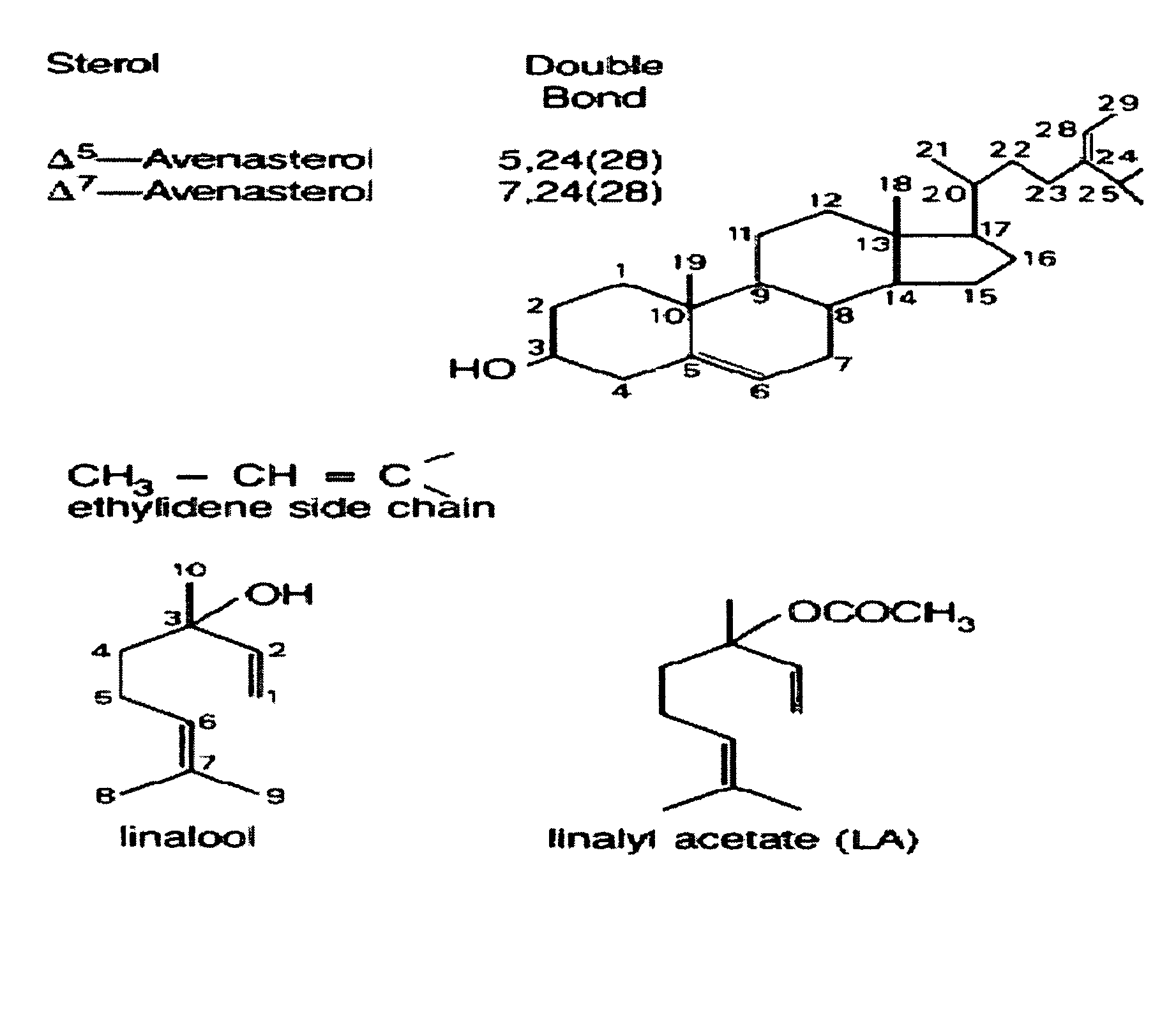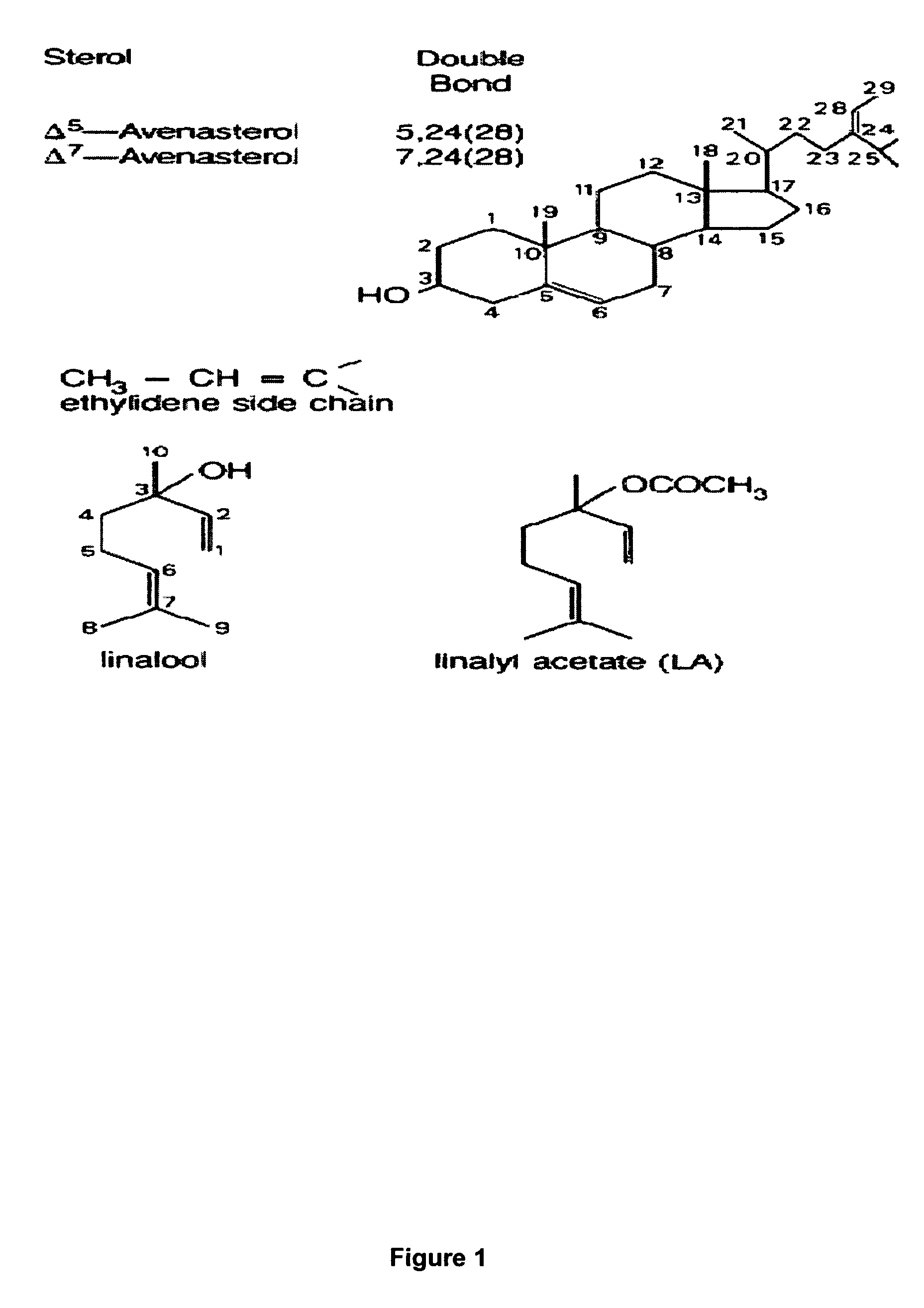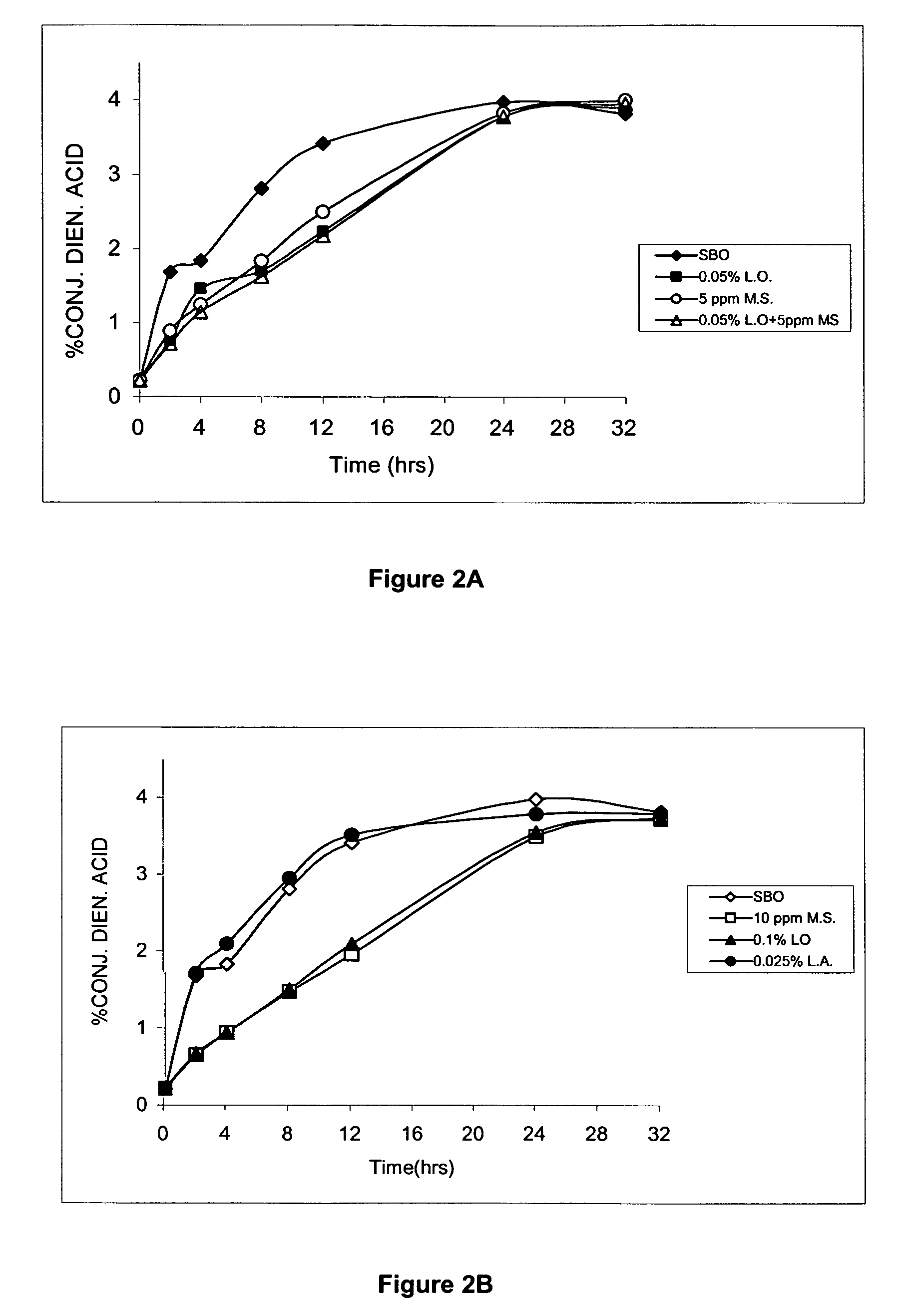Terpene ester compounds as autoxidation inhibitors for frying oils
a technology of autoxidation inhibitors and terpene ester compounds, which is applied in the direction of fatty substance preservation using additives, organic chemistry, chemistry apparatus and processes, etc., can solve the problems of frying potato chips without crispness, frying batter defoaming in doughnut frying, and loss of flavor, color and nutritive value of oil, so as to prolong the life of frying oil and improve the quality of foods fried. , the effect o
- Summary
- Abstract
- Description
- Claims
- Application Information
AI Technical Summary
Benefits of technology
Problems solved by technology
Method used
Image
Examples
example 1
Materials
[0023]Bleached, deodorized soybean oils, containing only citric acid was a gift from the ADM company (Decatur, Ill.). Peroxide value (PV) of the soybean oil as received were 0.1 meq / kg by the AOCS method Cd 8-53 (Firestone, ed., Official Methods and Recommended Practices of the American Oil Chemists Society, 4th Ed., AOCS Press, Champaign (1989), which is hereby incorporated by reference in its entirety). Olive oil was purchased from a local market.
[0024]Silica gel (40-140 mesh) used for purification of linalyl oleate (LO) reaction mixture was obtained from J.T. Baker Inc. (Phillipsburg, N.J.). Urea and sodium methylate solution in methanol (˜5.4 M) was purchased from Fluka (Milwaukee, Wis.). Other chemicals were reagent grade and from Fischer (Fairlawn, N.J.).
[0025]Foodgrade polydimethyl siloxane or methyl silicone fluid (MS, 0.97 g / mL at 25° C.; viscosity, 350 centistokes; stock no. 200 (R)) was a gift from Dow Corning Co. (Midland, Mich.). Linalyl acetate (LA) was purcha...
example 2
Synthesis of Linalyl Oleate
[0027]The LO was synthesized by interesterification of LA and a 10% molar excess of MO with 5 mL of 5.4 M methanolic sodium methoxide solution from which the methanol was removed under vacuum before the other reagents were added. A reduced pressure was used to remove methyl acetate and drive the reaction toward the formation of LO.
example 3
Column Purification of Linalyl Oleate
[0028]The LO mixture was fractionated by liquid chromatography to remove unreacted MO. One gram of the reaction mixture was passed into a column (20 mm (i.d.)×18 cm) containing 10 g of silica gel using hexane / diethyl ether (1 / 0.005 v / v). The ether was distilled over lithium aluminum hydride to remove peroxides and the buthylated hydroxyltoluene it contained as a stabilizer. Elution fractions of 20 mL were collected, and the fourth, fifth, and sixth fractions contained 92-95% linalyl oleate by gas chromatography (GC).
PUM
| Property | Measurement | Unit |
|---|---|---|
| Fraction | aaaaa | aaaaa |
| Fraction | aaaaa | aaaaa |
| Fraction | aaaaa | aaaaa |
Abstract
Description
Claims
Application Information
 Login to View More
Login to View More - R&D
- Intellectual Property
- Life Sciences
- Materials
- Tech Scout
- Unparalleled Data Quality
- Higher Quality Content
- 60% Fewer Hallucinations
Browse by: Latest US Patents, China's latest patents, Technical Efficacy Thesaurus, Application Domain, Technology Topic, Popular Technical Reports.
© 2025 PatSnap. All rights reserved.Legal|Privacy policy|Modern Slavery Act Transparency Statement|Sitemap|About US| Contact US: help@patsnap.com



